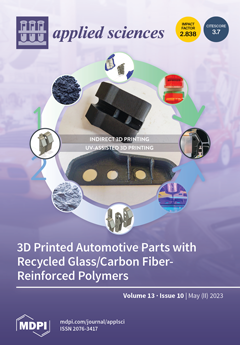(1) Background: Nowadays, special attention has been paid to red and purple fruits, including blueberries and sweet cherries, since they are highly attractive to consumers due to their organoleptic properties, standing out due to their vibrant red and purple colours and sweet flavour,
[...] Read more.
(1) Background: Nowadays, special attention has been paid to red and purple fruits, including blueberries and sweet cherries, since they are highly attractive to consumers due to their organoleptic properties, standing out due to their vibrant red and purple colours and sweet flavour, and nutritional value. (2) Methods: The present study evaluated the phenolic profile of phenolic-enriched extracts from blueberries and sweet cherries and explored their antioxidant potential against DPPH, superoxide and nitric oxide radicals, and ferric species, and their potential to inhibit the
α-glucosidase enzyme. Furthermore, their antimicrobial activity was also determined by microdilution method against four Gram-positive strains (
Enterococcus faecalis ATCC 29212,
Bacillus cereus ATCC 11778,
Listeria monocytogenes LMG 16779, and
Staphylococcus aureus ATCC 25923) and five Gram-negative strains (
Salmonella enterica subsp.
enterica ATCC 13311 serovar Typhimurium,
Klebsiella pneumoniae ATCC 13883,
Proteus mirabilis CECT 170,
Serratia marcescens CECT 159, and
Acinetobacter baumannii LMG 1025). (3) Results: By chromatographic techniques, eight anthocyanins were detected in blueberry coloured fraction and total extract, and five anthocyanins were detected in sweet cherry total extract and coloured fraction, while quercetin aglycone and chlorogenic acids were the dominant non-coloured compounds in blueberries and sweet cherries, respectively. All extracts demonstrated significant antioxidant properties, as well as the ability to inhibit the activity of
α-glucosidase enzyme and the development of various microorganisms. (4) Conclusion: The obtained data evidence the promising biological potential of blueberries and sweet cherries, being highly correlated with the presence of phenolic compounds.
Full article


